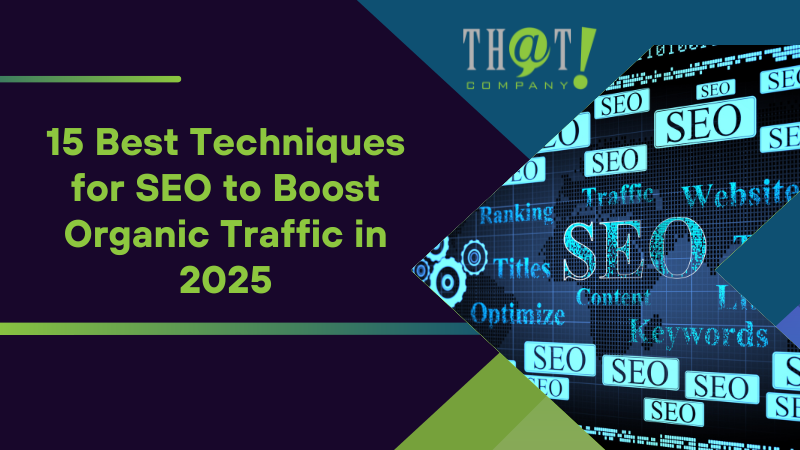
Want to boost organic traffic in 2025? Discover the most effective techniques for SEO in this guide. Learn methods to improve search rankings and increase visibility.
Key Takeaways
- Focus on discovering untapped long-tail keywords using tools like Google Keyword Planner to enhance targeted traffic.
- Optimizing for Core Web Vitals and improving user experience are critical for better search engine rankings and maintaining user satisfaction.
- Regular content updates, strategic internal linking, and leveraging structured data are essential for enhancing website visibility and driving organic traffic.

Discover Untapped Keywords Using Google Keyword Planner
Keyword research remains the cornerstone of any successful SEO strategy. In 2025, the game has shifted towards finding untapped, long-tail keywords that can drive targeted traffic to your site. Google Keyword Planner is an indispensable tool in this quest, helping you uncover relevant keywords that might otherwise go unnoticed.
Accessing Google Keyword Planner requires a free Google Ads account. Enter seed keywords related to your niche once inside. The tool will generate a list of keyword suggestions, which you can filter by attributes such as brand, color, and style to refine your search results. This ability to customize your search is invaluable in honing in on specific search queries that align with your target audience’s search intent.
Analyzing competitor keywords is another effective strategy. Understanding your competitors’ ranking keywords helps identify gaps and opportunities for targeting more keywords. Additionally, platforms like Reddit can provide trending terms and phrases that are currently gaining traction, giving you an edge in keyword research.
Avoid the trap of keyword stuffing by focusing on techniques for SEO that naturally fit within your content. Remember, search engines understand context better than ever before, so aim for a seamless integration of keywords that enhance the readability and relevance of your content.

Optimize Your Site for Core Web Vitals
Core Web Vitals have become a critical ranking factor in search engine optimization. These metrics, which include loading speed, interactivity, and visual stability, are essential for providing a superior user experience. Implementing techniques for SEO to optimize your site for Core Web Vitals enhances both search engine rankings and user satisfaction.
One effective way to boost loading times is by using a content delivery network (CDN). A CDN distributes your content across various servers, ensuring that users can access it quickly, regardless of their location. Another important step is to minimize unnecessary redirects, which can significantly slow down your site’s load time.
Enabling Gzip compression can also make a substantial difference. This technique reduces the size of your CSS, HTML, and JavaScript files, leading to faster load times. Enhance your Largest Contentful Paint (LCP) by ensuring the LCP resource is discoverable and prioritized in the HTML source.
Visual stability is critical for user experience, and to minimize Cumulative Layout Shift (CLS), explicitly setting sizes for content is essential. Avoid animating properties that induce layout changes and instead, use transforms to maintain a stable visual experience.

Update and Republish Old Blog Posts
Keeping your content fresh and relevant is paramount in the world of SEO. Search engines prioritize up-to-date information, and one effective way to maintain your site’s relevance is by updating and republishing old blog posts. This strategy not only enhances the credibility of your content but also increases its chances of ranking higher in search results.
Regular content audits are essential to identify which blog posts need updates. Replace outdated statistics and information with current data to enhance the reliability of your content. Additionally, incorporating new keywords that align with current search intent can significantly improve your content’s visibility, especially when using tools like google analytics.
Improving visuals and adding multimedia elements such as images, videos, and infographics can further boost reader engagement. Maintaining the same URL during updates helps preserve the page’s authority and ranking, ensuring that your refreshed content continues to perform well. Finally, re-promoting updated posts across various platforms can attract new readers and drive more traffic to your site.

Leverage Internal Linking for Better Navigation
Internal linking enhances site navigation and helps search engines index your content more efficiently. A well-executed internal linking strategy guides users through your site, improving their experience and increasing the chances of conversion.
When you add internal links, it signals to search engines which pages on your site are important. Implementing breadcrumb navigation can further clarify your site’s structure, making it easier for users to understand the content hierarchy and navigate through multiple pages. Regular audits of your internal links are crucial to identify and fix broken links or excessive linking that may negatively impact your SEO performance.
Contextual links within content pillars help users find related topics, enhancing their overall understanding of your site. Diversifying anchor text in your internal links maintains a natural link profile and avoids search engine penalties. Additionally, internal links can help manage keyword cannibalization by directing search engines to the most relevant pages.

Utilize Structured Data for Enhanced SERP Features
Structured data is a game-changer in search engine optimization, significantly improving visibility in search engine results pages (SERPs) and boosting click-through rates. Websites that implement Schema Markup generally experience a 40% higher click-through rate compared to those without it.
Using structured data increases the likelihood of your webpages appearing in rich snippets on SERPs, offering users quick answers. JSON-LD, a type of structured data, has seen increased adoption among websites, indicating its growing importance in SEO.
Content quality must align with Google’s Structured Data requirements to ensure eligibility for rich results. Employ diverse Schema Markup strategies to mitigate the impact of algorithm changes on rich results, promoting stability in your site traffic. This approach not only enhances your website’s search engine rankings but also ensures more organic traffic.

Create High-Quality Backlinks
Creating high-quality backlinks is crucial for a successful SEO strategy. These backlinks indicate to search engines that your content is valuable and authoritative, enhancing your search engine rankings and increasing the organic traffic to your site.
Guest blogging is a proven technique for building high-quality backlinks. Writing articles for other websites with a backlink to your site can improve visibility and authority. Utilizing feeler emails during outreach campaigns can significantly increase response rates, as they gauge interest before making formal requests.
Creating engaging content, such as infographics and ultimate guides, can also improve your chances of earning important backlinks. A strong backlink profile focuses on quality and authoritative links, which are critical for improving your website’s search engine rankings and overall performance.

Optimize Content for Semantic Search
Semantic SEO is the future of search engine optimization, focusing on understanding page topics instead of just keywords. Natural Language Processing (NLP) is crucial for search engines to comprehend human language and the relationships between words, making it essential for effective SEO.
Understanding user intent is key to improving content relevancy for various search queries. Covering related subtopics helps in optimizing for semantic SEO, allowing search engines to understand the context around keywords better. Tools like LSIGraph can help find related subtopics for semantic SEO, enhancing the depth and relevance of your content.
Creating high-quality cornerstone content is essential for building topic clusters that inform comprehensive coverage of themes. Techniques for SEO, such as developing topic clusters, help Google understand your website’s structure and authority on a specific topic, ultimately improving your search rankings.

Improve User Experience (UX)
Improving user experience (UX) is a critical component of an effective SEO strategy for website owners. Fast-loading internal pages are essential for keeping bounce rates low and improving user experience. One in four visitors abandon sites if they take more than four seconds to load, and nearly 70% of consumers said that page speed affects their willingness to buy.
Mobile optimization is also necessary due to the rising use of mobile devices for browsing. Design and functionality optimized for mobile devices are crucial for user retention. Ensuring site style, structure, and page speed are optimized can significantly improve the mobile user experience and overall user satisfaction.
Optimizing for readability through shorter paragraphs and bullet points can also enhance user experience. Making it easier for users to find information improves their overall perception of your site and encourages longer dwell times.
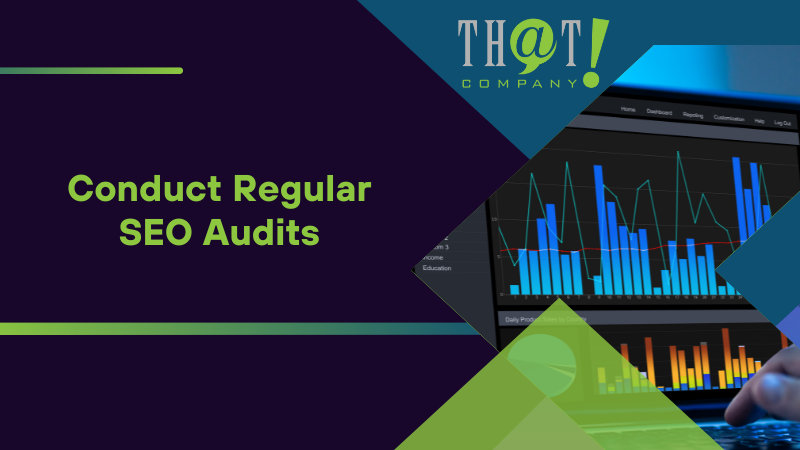
Conduct Regular SEO Audits
Conducting regular SEO techniques audits is essential for tracking organic traffic trends and ensuring that your website remains optimized for search engines. These audits help identify technical issues such as crawl errors and duplicate site versions, which are critical for maintaining proper indexing and ranking.
Utilizing tools like Semrush and Pingdom allows you to monitor page speed, server response time, and make necessary updates to improve your site’s performance. Prioritizing website accessibility is not only beneficial for user engagement but also positively impacts overall SEO performance.
Regular audits ensure that your SEO strategies remain effective and aligned with current best practices, ultimately leading to more organic traffic and better search engine rankings.
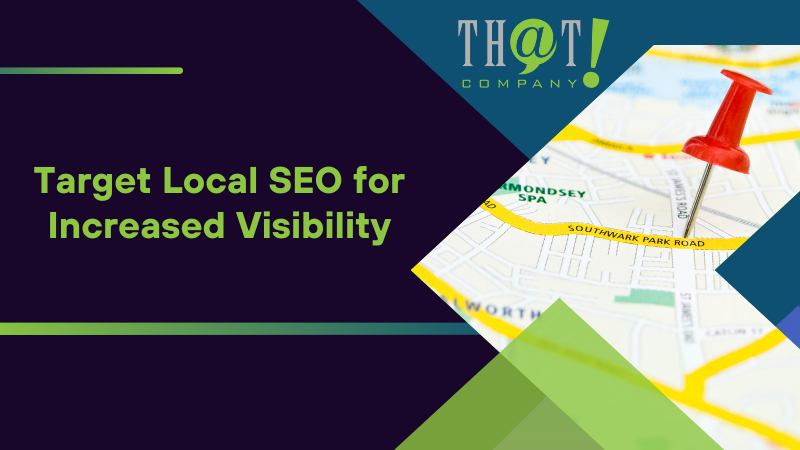
Target Local SEO for Increased Visibility
Local SEO is crucial for businesses aiming to attract customers in specific regions. Utilizing techniques for SEO, such as optimizing your Google Business Profile, is one of the most effective strategies for improving local search visibility. Ensure that your profile contains complete and accurate information, including business hours, contact details, and descriptions, which can be managed effectively by a white label digital marketing agency.
Adding photos to your Google Business Profile can attract customers and provide insight into your business’s offerings. Keeping business hours updated helps instill confidence in potential customers regarding your availability. Responding to customer reviews can enhance your local ranking and foster customer loyalty.
Analyzing search volumes specific to regions is beneficial for local SEO strategies. Local search results prioritize relevance, distance, and prominence when determining rankings, so focusing on these factors can significantly improve your local search visibility.

Write Comprehensive and Engaging Content
Creating comprehensive and engaging content is key to a successful SEO strategy. Understanding your audience is crucial for creating impactful content that resonates with them. Comprehensive content encourages longer dwell times on your site, which positively impacts your search engine rankings.
Incorporating various types of media, such as images and videos, can significantly boost user engagement. Content that includes videos increases dwell time and visitor engagement. Regularly updating your content is essential to maintain its relevance and search engine rankings.
Using clear and engaging headlines can enhance click-through rates. The average word count of first-page Google results is 1,447 words, indicating the depth required in content. Linking to relevant internal and external content adds value and can improve your SEO performance.

Use Social Media to Amplify Content
Social media plays a crucial role in promoting content and boosting brand awareness. Incorporating links in social media messages, even if they are no-follow, can still generate traffic to your site. Engaging with followers through comments and community building can significantly enhance social media SEO efforts.
Short-form videos are particularly effective for boosting engagement and can be used to promote links back to your website. Working with influencers can improve brand awareness and drive targeted traffic to your content. Leveraging social media platforms amplifies your content’s reach and generates more organic traffic.

Monitor and Improve Page Speed
Page speed is a critical factor in search engine optimization and user experience. Users expect rapid access to content, and delays can lead to increased abandonment rates. Implementing techniques for SEO and regularly checking your site’s page speed is essential for maintaining optimal performance.
Tools like PageSpeed Insights provide a performance score for your site, ranging from 0 to 100, and offer specific recommendations for improvements. Optimizing images and reducing the total number of requests are effective ways to enhance your website speed. Additionally, enabling caching for repeat visitors can significantly improve loading times, utilizing plugins like WP Rocket or W3 Total Cache.
Using tools like ShortPixel to reduce image size without loss of quality can also contribute to faster loading speeds. Continuously monitoring and improving page speed enhances user experience and boosts search engine rankings.

Optimize for Voice Search
Voice search is becoming increasingly popular, and optimizing your content for this medium is essential to remain competitive in search engine rankings. Voice search queries tend to be longer and more conversational than traditional text searches, so adjusting your content to a more conversational tone is vital.
Incorporating long-tail keywords, which are keywords with three or more words, can help target voice search queries effectively. Adding FAQ sections to your web content can also address common voice search keywords and improve your site’s visibility.
Monitoring search rankings continuously is vital to maintain competitiveness in voice search. Structured data boosts the chances of your content being used to answer voice queries, as 40% of voice search engine results come from featured snippets. Optimizing for voice search captures more organic traffic and enhances search engine rankings.

Employ Effective Email Outreach Strategies
Email outreach remains a powerful tool in link-building and enhancing online visibility. Personalizing emails can significantly increase response rates, making your outreach efforts more effective. Using psychological triggers, such as the word ‘because,’ can lead to a 45% increase in agreement and response.
Strategically following up on emails can further improve response rates. Employing effective email outreach strategies builds a strong backlink profile, enhances SEO, and drives more organic traffic to your site.
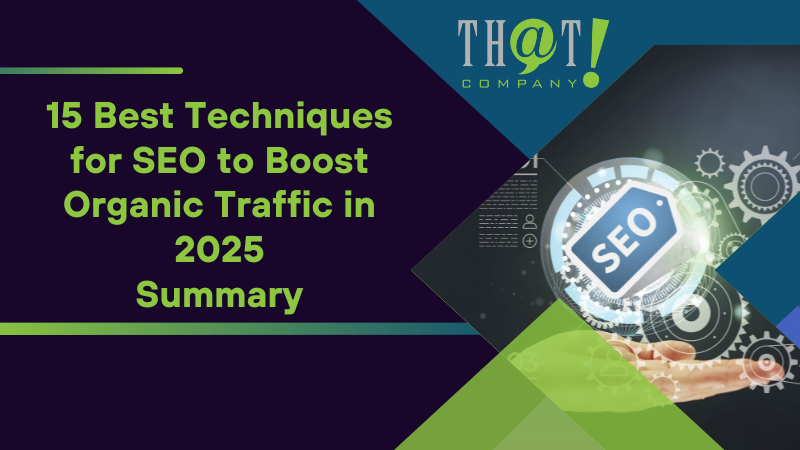
Summary
In summary, mastering the latest SEO techniques is essential for boosting organic traffic and improving your website’s search engine rankings in 2025. From discovering untapped keywords and optimizing for Core Web Vitals to leveraging internal linking and creating high-quality backlinks, each technique plays a crucial role in a successful SEO strategy.
By implementing these strategies, you can enhance your online visibility, provide a better user experience, and ultimately achieve higher search engine rankings. A white label SEO firm can help you stay proactive, continuously monitor your performance, and adapt to the ever-changing SEO landscape to stay ahead of the competition.

Frequently Asked Questions
What are the methods of search engine optimization?
On-page optimization methods include using keyword-rich URLs, updating title tags with relevant search terms, and properly utilizing the alt attribute for images. A white label SEO agency can help implement these techniques to improve your website’s visibility in search engine results.
What are the 3 C’s of SEO?
The three C’s of SEO are content, code, and credibility. Focusing on these elements can significantly enhance your site’s search engine performance.
What are SEO strategies?
An SEO strategy is a comprehensive plan aimed at optimizing content for higher visibility in search engine results, ensuring more organic traffic comes to your website. It includes techniques like keyword research, on-page optimization, technical SEO, and link building to achieve these goals, and can be effectively executed by a white label SEO provider.
Why is keyword research important for SEO?
Keyword research is crucial for SEO as it uncovers relevant keywords that can attract targeted traffic, enhancing your site’s search engine rankings and visibility.
What are Core Web Vitals, and why are they important?
Core Web Vitals are critical metrics that assess loading speed, interactivity, and visual stability, significantly impacting user experience and search engine rankings. Prioritizing these metrics can lead to better engagement and improved visibility online.













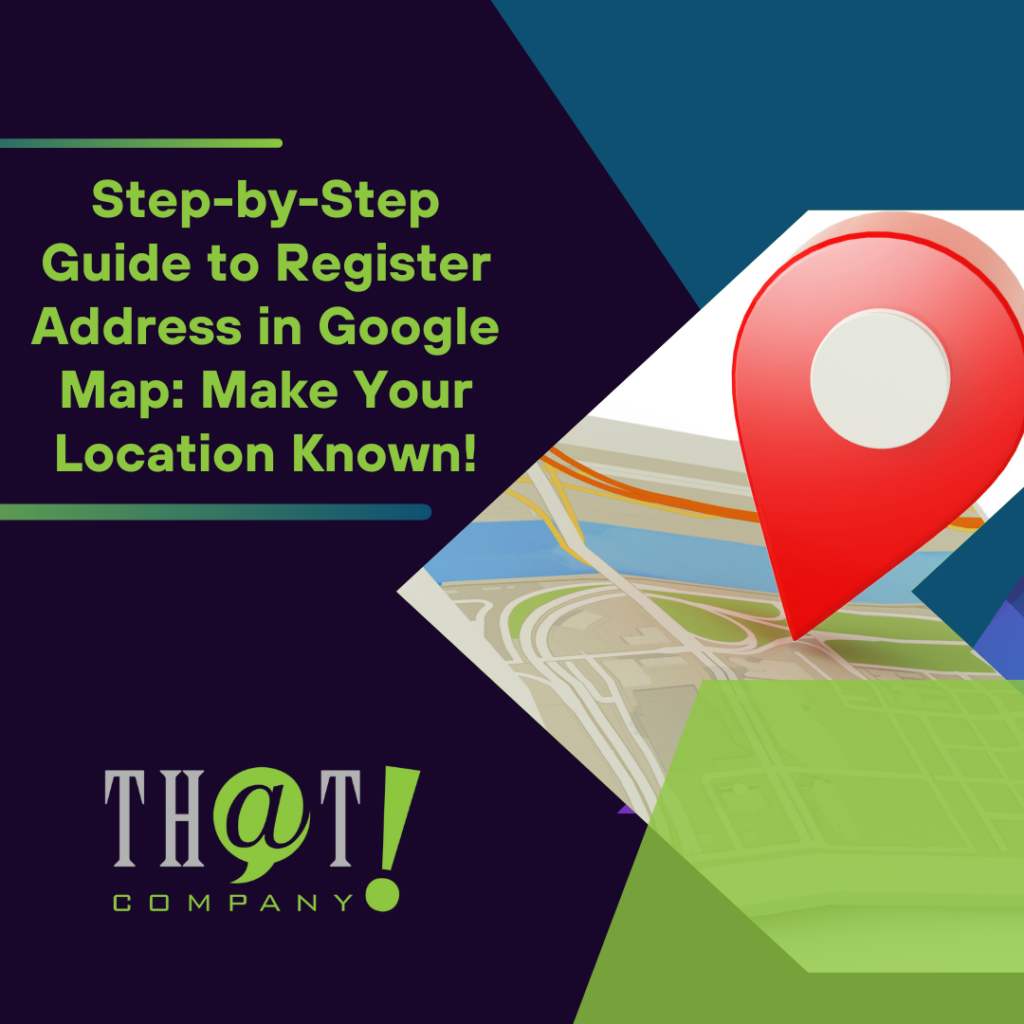







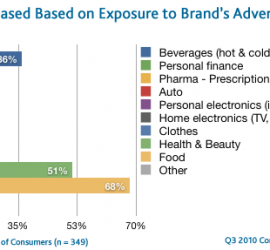





 Talk With Us
Talk With Us  Give Some Love
Give Some Love 


